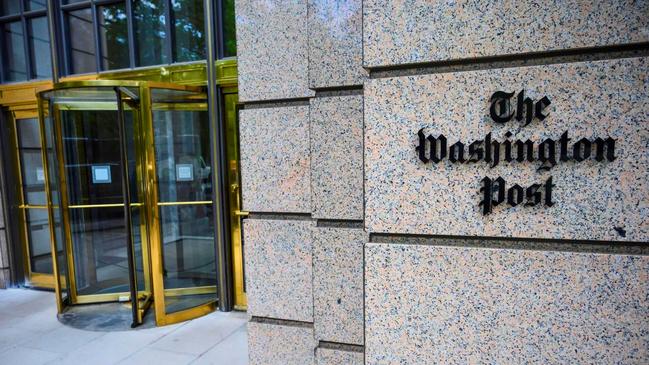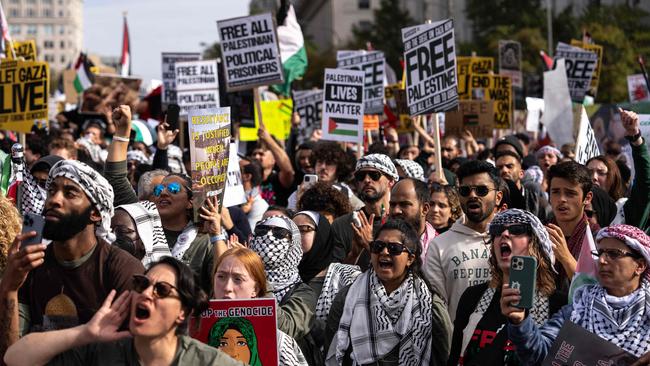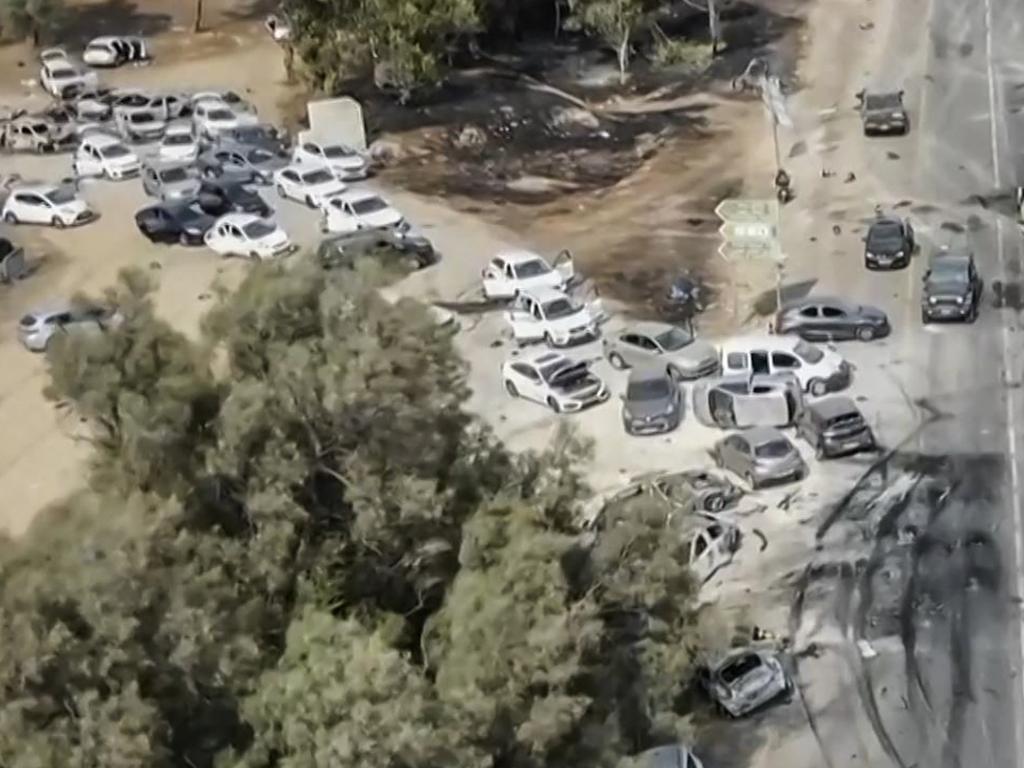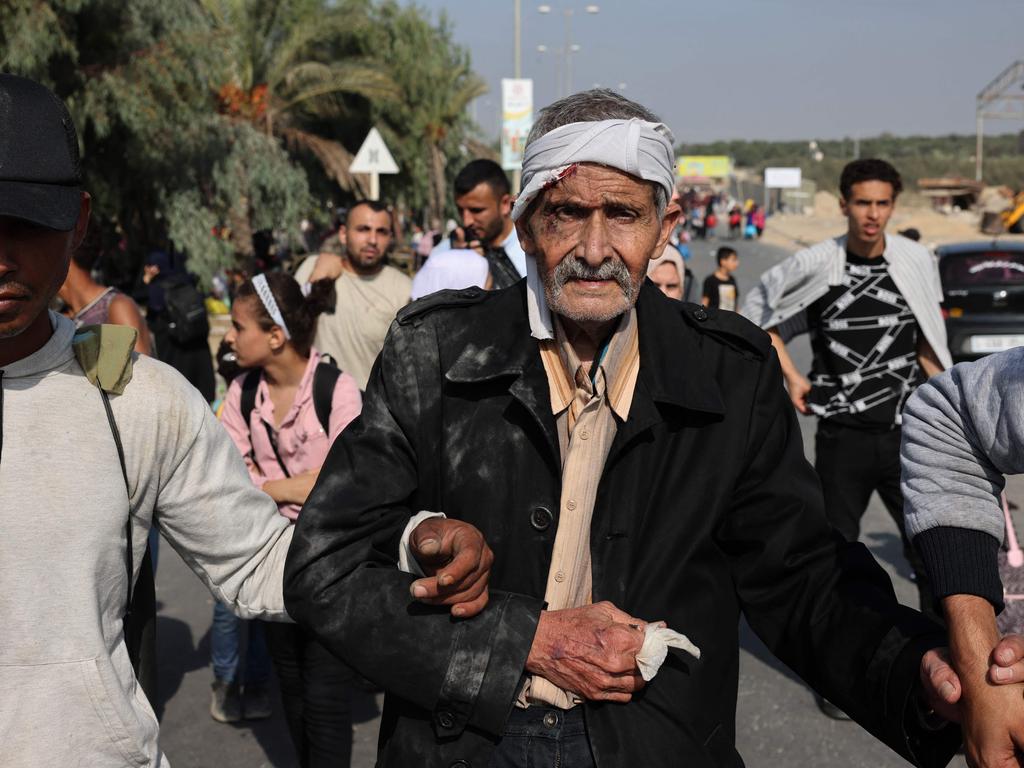Washington Post removes Hamas cartoon after backlash from staff and readers
The masthead has pulled a cartoon depicting a Hamas spokesman putting civilians in the line of fire after multiple staff inside the newsroom and readers complained it was racist.

The Washington Post removed a cartoon depicting a Hamas spokesman putting civilians in the line of fire after multiple employees inside the newsroom and readers complained that it was racist.
In the cartoon, the Hamas official has women and children bound to his body by rope, with a baby tied to his head. He is standing next to a Palestinian flag, and in a speech bubble says, “HOW DARE ISRAEL ATTACK CIVILIANS …” Before the drawing was removed, a number of employees inside the Post newsroom had complained to top editors that the cartoon was racist, according to people familiar with the matter. The cartoon also drew a backlash from some readers who left comments on the Post’s website.
“The caricatures employ racial stereotypes that were offensive and disturbing,” wrote one reader.
Cartoon in the Washeighnton Post, claiming that children and women are taken as human shields in #Gaza. pic.twitter.com/f19MsU7nN6
— Quds News Network (@QudsNen) November 7, 2023
Michael Ramirez, the cartoonist, didn’t immediately respond to a request for comment.
“A cartoon we published by Michael Ramirez on the war in Gaza, a cartoon whose publication I approved, was seen by many readers as racist,” wrote Editorial Page Editor David Shipley in a note on the page where the drawing was removed.
“This was not my intent. I saw the drawing as a caricature of a specific individual, the Hamas spokesman who celebrated the attacks on unarmed civilians in Israel. However, the reaction to the image convinced me that I had missed something profound, and divisive, and I regret that.” The Post has decided to keep a selection of responses to the caricature on the site, he wrote.
Shortly after Shipley removed the post and replaced it with his note, Executive Editor Sally Buzbee alerted staff of the removal “given the many deep concerns and conversations today in our newsroom.” “Thank you to everyone who emailed, David felt the pressure and reacted, ” Zainab Mudallal, a staffer in the Post’s Opinions section, wrote on Slack, according to a screenshot of the conversation reviewed by The Wall Street Journal.
The Israel-Hamas conflict has been a fraught discussion across communities, inside businesses and at educational institutions, provoking debate about how to cast blame and how to characterise history. News organisations are no different — and the fact they have a megaphone, allowing them to affect how people perceive these storylines, adds an additional layer of sensitivity.

The Associated Press and CNN on Thursday said they were no longer working with freelance photographer Hassan Eslaiah after watchdog group HonestReporting reported that he has appeared in photographs with Hamas, including on Oct. 7, the day of the attacks on Israel.
The Gap and CNN each said they had no prior knowledge of the Oct. 7 attacks. “Hassan Eslaiah, who was a freelance journalist working for us and many other outlets, was not working for the network on October 7th. As of today, we have severed all ties with him,” CNN said in a statement.
“AP uses images taken by freelancers around the world. When we accept freelance photos, we take great steps to verify the authenticity of the images and that they show what is purported,” the AP said in a statement.
Eslaiah couldn’t be reached for comment.
Staffers at the New York Times and The Wall Street Journal had expressed concerns about headlines and alerts in October that initially said a blast at a Gaza hospital was caused by an Israeli air strike, attributing the information to Palestinian officials. Later, both news outlets reported that Israel and the U.S. government said evidence suggested the blast was caused by a Palestinian group.
The Times later issued an Editor’s Note saying that early versions of its coverage relied too heavily on claims by Hamas and didn’t make clear that those claims couldn’t be verified.




